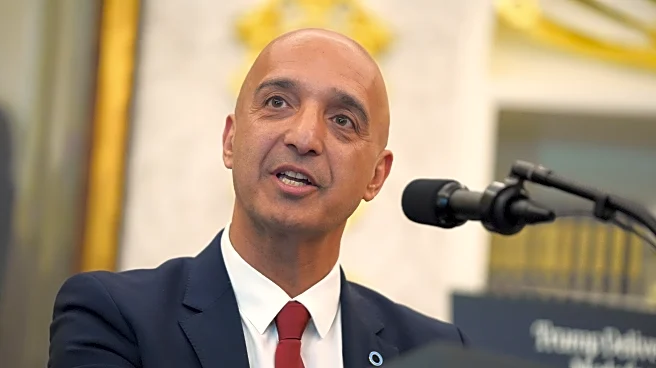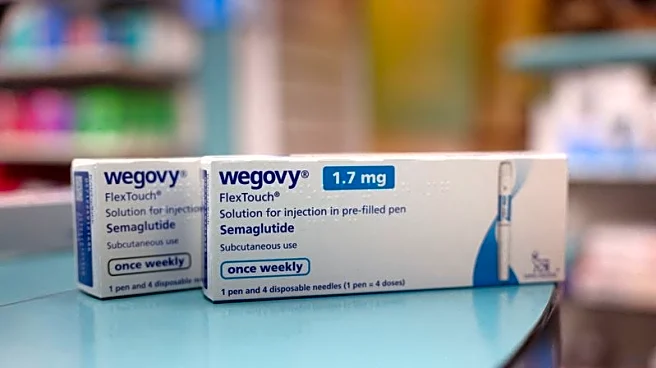What's Happening?
Novo Nordisk has announced a significant discount on select doses of its GLP-1 weight loss drugs, Ozempic and Wegovy, for individuals paying out of pocket. Until the end of March, the company will offer
the two lowest doses of these medications at $199 per month for two months, after which the price will increase to $349 per month. This offer is available through the Ozempic and Wegovy websites, where patients can register for the discounts. The initiative aims to provide immediate cost savings for those without insurance coverage or who choose to self-pay. The list prices for these drugs typically exceed $1,000 per month. The discount follows a similar offer made with Costco and other retailers. President Trump has also been involved in discussions to lower the out-of-pocket costs of these medications.
Why It's Important?
The discount on Ozempic and Wegovy is significant as it addresses the high cost of GLP-1 medications, which are popular for their weight loss benefits and additional health advantages, such as improving heart health and reducing cancer mortality. With nearly one in five U.S. adults having used a GLP-1 medication, the financial burden is substantial, especially for those without insurance coverage. The reduced pricing could make these drugs more accessible to a broader population, potentially improving public health outcomes. However, experts like Stacie Dusetzina from Vanderbilt University Medical Center caution that while the initial lower price may attract more users, the subsequent price increase could deter long-term use, potentially limiting the benefits.
What's Next?
The introduction of this discount may prompt reactions from various stakeholders, including insurance companies and employers. As more employers consider covering GLP-1 medications, the availability of lower-cost cash-pay options might influence their decisions on benefits coverage. Additionally, the healthcare industry will likely monitor the impact of these pricing strategies on patient access and adherence to treatment. The broader implications for healthcare policy and drug pricing strategies could also be significant, as stakeholders evaluate the balance between cost, access, and health outcomes.
Beyond the Headlines
The discount strategy by Novo Nordisk highlights the complex dynamics of drug pricing in the U.S. healthcare system. While the offer may increase access for some patients, it also raises questions about the sustainability of such pricing models and their impact on insurance coverage decisions. The focus on cash-pay options could inadvertently lead to reduced insurance coverage for these medications, as employers seek to manage benefit costs. This development underscores the ongoing challenges in balancing affordability, access, and innovation in the pharmaceutical industry.













